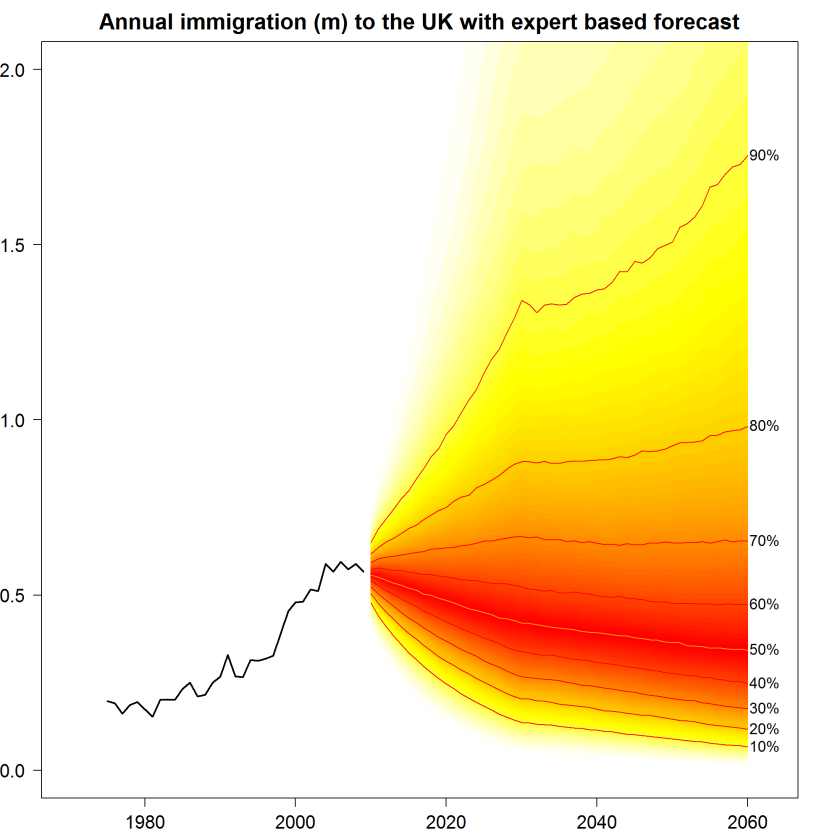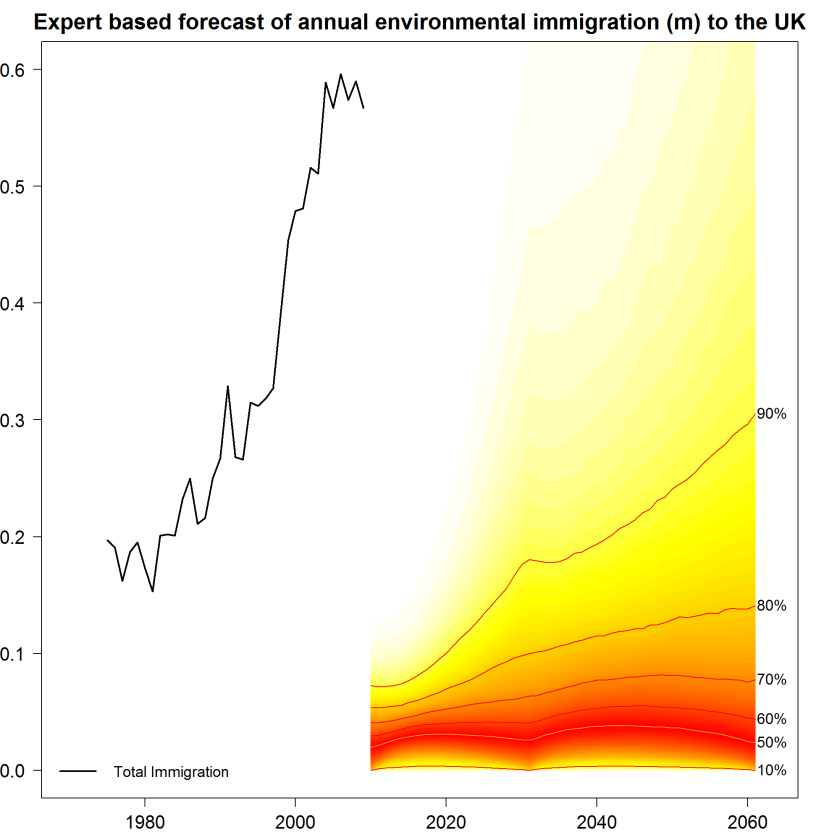A couple of months ago, a paper I worked on with co-authors from the Centre of Population Change was published in Population and Environment. It summarised work we did as part of the UK Government Office for Science Foresight project on Migration and Global Environmental Change. Our aim was to build expert based forecasts of environmental immigrants to the UK. We conducted a Delphi survey of nearly 30 migration experts from academia, the civil service and non-governmental organisations to obtain estimates on the future levels of immigration to the UK in 2030 and 2060 with uncertainty. We also asked them what proportion of current and future immigration are/will be environmental migrants. The results were incorporated into a set of model averaged Bayesian time series models through prior distributions on the mean and variance terms.
The plots in the journal article got somewhat butchered during the publication process. Below is the non-butchered version for the future immigration to the UK alongside the past immigration data from the Office of National Statistics.

At first, I was a bit taken aback with this plot. A few experts thought there were going to be some very high levels of future immigration which cause the rather striking large upper tail. However, at a second glance, the central percentiles show a gentle decrease where these is only (approximately) a 30% chance of an increase in future migration from the 2010 level throughout the forecast period.
The expert based forecast for total immigration was combined with the responses to questions on the proportion of environmental migrants, to obtain an estimate on both the current level of environmental migration (which is not currently measured) and future levels:

As is the way with these things, we came across some problems in our project. The first, was with the definition of an environmental migrant, which is not completely nailed on in the migration literature. As a result the part of the uncertainty in the expert based forecasts are reflective of not only the future level but also of the measure itself. The second was with the elicitation of uncertainty. We used a Likert type scale, which caused some difficulties even during the later round of the Delphi survey. If I was to do over, then this I reckon problem could be much better addressed by getting experts to visualise their forecast fans in an interactive website, perhaps creating a shiny app with the fanplot package. Such an approach would result in smoother fans than those in the plots above, which were based on interpolations from expert answers at only two points of time in the future (2030 and 2060).
Publication Details:
Abel, G.J., Bijak, J., Findlay, A.M., McCollum, D. and Wiśniowski, A. (2013). Forecasting environmental migration to the United Kingdom: An exploration using Bayesian models. Population and Environment. 35 (2), 183–203
Over the next 50 years, the potential impact of environmental change on human livelihoods could be considerable, with one possible consequence being increased levels of human mobility. This paper explores how uncertainty about the level of immigration to the United Kingdom as a consequence of environmental factors elsewhere may be forecast using a methodology involving Bayesian models. The conceptual understanding of forecasting is advanced in three ways. First, the analysis is believed to be the first time that the Bayesian modelling approach has been attempted in relation to environmental mobility. Second, the paper considers the expediency of this approach by comparing the responses to a Delphi survey with conventional expectations about environmental mobility in the research literature. Finally, the values and assumptions of the expert evidence provided in the Delphi survey are interrogated to illustrate the limited set of conditions under which forecasts of environmental mobility, as set out in this paper, are likely to hold.